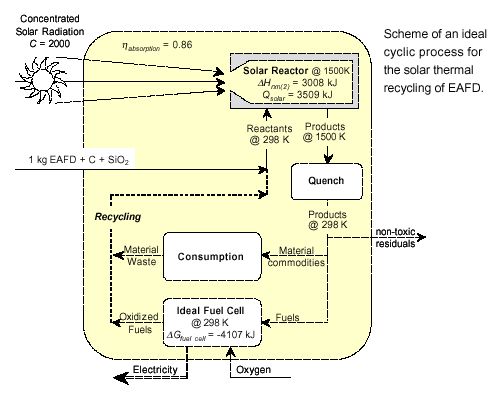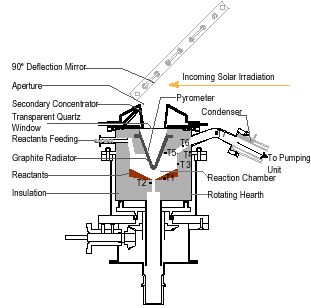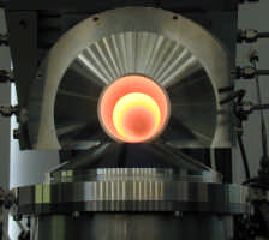Solar Thermal Recycling of Hazardous Waste Materials
Funding source: external pageBfE - Swiss Federal Office of Energycall_made, external pagePaul Scherrer Institutecall_made, RWH Consulting GmbH
Background – Solid waste materials, derived from a wide variety of sources, e.g. incineration residuals, discharged batteries, contaminated soil and dusts, etc, contain hazardous compounds that cannot be discharged to the environment. They are usually vitrified in a non-leaching slag and finally disposed on hazardous waste storage sites. However, limited storage space, increasing storage costs, and environmental regulations have urged the need for technologies that recycle these toxic materials into useful commodities rather than deposit them in dump sites for an undetermined period of time. Materials recycling require high-temperature energy-intensive processes. The commercial recycling techniques by blast, induction, arc, and plasma furnaces are characterized by their high energy consumption and their concomitant environmental pollution. Alternatively, the use of concentrated solar energy as the source of process heat avoids GHG emissions derived from the combustion of fossil fuels, and further offers the possibility of converting waste materials into valuable commodities for processes in closed and sustainable materials cycles.
Two important sources of wastes contaminated with heavy metal oxides are considered: 1) electric arc furnace dust (EAFD), and 2) automobile shredder residue (ASR).

Aims –
- development of solar thermal processes for the efficient recycling of solid waste materials;
- demonstration of this technology using a 5 kW solar chemical reactor;
- conceptual design and evaluation of the economics of a large-scale solar chemical plant.
Project-related Publications
Publications information to follow soon.


